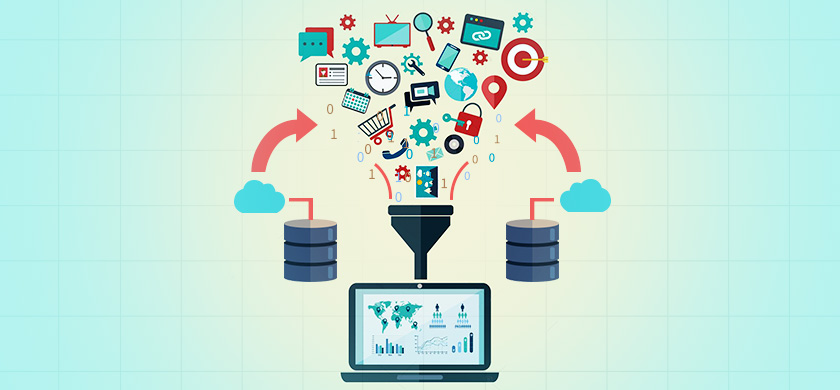Big data helps companies anticipate new trends, predict future events, and create more profitable operations. New use cases for big data are constantly emerging, from predictive maintenance in manufacturing to maximizing the customer experience in retail.
Big data integration ensures businesses can make the most of their analytics capabilities and operate in a data-driven manner.
Organizations need insights to drive faster, more strategic, and operational business decisions, which is crucial to stay ahead of a constantly changing business environment. Big data also drives necessary business changes, improves how companies can attract customers and enables them to outperform their peers.
Today, organizations have to differentiate themselves by how they approach analytics, and with big data analytics and effective data integration techniques, they will strengthen their analytics maturity and be one step closer to their business goals.
What Is Big Data and Its Usage
Big data is basically large volumes of both structured and unstructured data sets that are defined by their complexity. Because of how voluminous the data sets are, common approaches to data processing simply aren’t enough to manage them effectively. The “four V’s,” is often used to describe the big data structure – volume, velocity, variety, and veracity, which refers to the amount of data, the speed it’s received at, the different types, and the quality, respectively. The big data organization structure, coined by the structured and unstructured data, can be integrated based on what use cases the business will use their data for.
While big data isn’t a new concept, many organizations have yet to realize the value it can provide for their business. In fact, more than 20 years after the term “big data” was invented, most companies still don’t have initiatives in place to develop an analytics-driven culture.

Big data holds the potential to unlock powerful insights that lead to accurate, informed decisions. But this depends on the data analytics process, big data management, and being able to use the right tools to recognize patterns within these huge datasets to generate meaningful business value through data-driven results.
It starts with data categorization, which conforms data to a systematized pattern through filling in gaps and missing values and organizing data into categories that make it simple for the data to be sorted, retrieved, and stored. Then the data sets can be analyzed and explored, so they produce the right insights, like anticipating future consumer demands to guide product development or identifying potential mechanical issues on an automated assembly line before they become deeper problems. Integrating the proper data structure with big data can drive even better business insights.
How Big Data Integration Is Changing the Way Businesses Operate
Many organizations are currently adopting big data strategies in the emulation of big data companies that are leading in data analytics innovation, such as artificial intelligence (AI). From monitoring employee performance and minimizing fraud threats to optimizing the customer journey and analyzing competitors in real-time, big data completely changes workflows, processes, and how businesses fundamentally operate.

Consequently, there are many different ways businesses can make use of big data and make a significant impact, and these are just the tip of the iceberg:
- Data-driven decision-making: The big data analytics structure helps data quickly transform into insights, meaning you can literally use data as the backbone of smart decision making, like developing a new service based on ongoing trend identification.
- Personalization and focused marketing: Using customer-generated data can provide understanding into actions they take during interaction with a brand, who the customer is, and what their behaviors are so that businesses can address their pain points and provide targeted marketing.
- Increased operational efficiency: Big data can promote more efficient operational structures in targeted areas like HR, where machine learning can automatically screen job candidates based on predetermined qualifications, creating a leaner process for this typically time-consuming, costly activity.
- Improved product and service offering: Analyzing data trends across channels, like social media platforms and mobile apps, enables businesses to improve existing offerings to better cater to specific markets. Things like sentiment analysis can provide insight into how consumers feel about a business’s products so they can be shaped accordingly.
- Improved solutions leveraging technology: Intelligent technology like machine learning can take collected data to generate new revenue streams, improve business growth, and reduce cost through improved products, services, or other solutions, like personalized recommendation engines, or lead scoring to lower acquisition costs.
Role of Data Entry in Using Big Data to the Fullest
In 2012, author Geoffery Moore tweeted that “without big data analytics, companies are blind and deaf, wandering out onto the Web like deer on a freeway.” Eight years later, his bold claim is more relevant than ever; big data analytics is an essential factor in business survival. Making strategic, forward-thinking business moves hinges on the ability to collect, analyze, and use the huge amounts of data they’re inundated with daily.
Data is increasingly at astonishing rates, with about 2.3 trillion gigabytes of new data created every day from various sources, whether it’s smart devices, factory equipment, or social media. Big data tutorials, while often helpful, can’t provide pragmatic business solutions. Extracting accurate data from various sources, like images, documents, and videos, requires applied expertise and mechanisms such as a data integration platform and data integration tools.
Structuring these various data sources is paramount to data preparation, a necessary step incorrectly analyzing the data. In fact, this step typically requires about 80% of a data scientist’s time, involving cleansing the data for accuracy and quality, and merging new data sources within the data integration architecture. The data structure must be able to support efficient organization and storage (a core pillar of big data), which is one reason why the early phases of data preparation are so valuable.
Generate Big Opportunities with Big Data
Data Entry Outsourced (DEO) applies nearly two decades of expertise in data entry and data management to deliver precise services to businesses in all corners of the world. From broad services like data conversion and data processing to the specialized ones such as CRM data entry, ERP data entry, and more, DEO has been assisting businesses with a combination of data entry techniques and skilled operators. Prepare for fast-moving, constantly changing big data analytics with data entry, categorization, validation, structuring, and data integration services that simplifies the task of preparing your data to become a result-driven business asset. Leverage DEO’s extensive industry experience to start advancing your journey and success with big data and analytics today.
-Data Entry Outsourced




